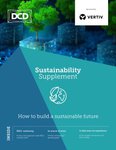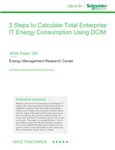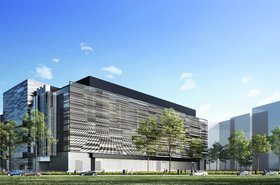In many of the older, more established markets, the infrastructure for data centers is governed by legacy ideas and technologies, from energy sourcing to cooling, water usage, and network transport.
In newer markets, there is tension to be observed where new data centers and campuses are being developed. Still, that tension can be offset by employing fresh perspectives on data center design and innovative execution that relies on carbon-free and renewable energy, more efficient cooling, improved biodiversity, optimal waste management, and more.
In many cases, improvements in mature markets can be incremental. Still, in new markets, data centers can be designed and developed from the ground up with sustainability firmly in mind. Let’s unpack some opportunities in new greenfield data center markets and campuses.
Data center providers operate in a dynamic, fast-moving industry that is required to adapt and respond to changes in almost every aspect of its business. These changes impact everything from construction standards, cooling options, and energy sourcing to community relations, security, water usage, and more. On top of all that, the underlying needs of our customers can change dramatically and very quickly.
Shift in requirements
Today, we are seeing another rapid shift in business requirements that promises once again to demand a quick, effective response from data center providers worldwide. With the rise of Artificial Intelligence (AI), we see that AI providers have business needs that differ significantly from cloud or content providers.
That change offers data center providers a big opportunity to tailor solutions that serve a significant new business segment and improve the design, deployment, and operations of new data centers around the globe.
A few decades ago, telecom industry watchers were surprised to see a new trend in telephone service delivery and adoption: Mobile providers established new networks more quickly and widely in markets that had never seen substantial penetration in landline services. And customers were signing up at a rapid pace. As a result, markets in greenfield regions of Africa, Asia, South America, and elsewhere saw faster mobile adoption than more mature, well-financed markets in North America or Europe.
Many factors were driving this trend, but at its core were two key drivers:
- Traditional telecom providers had underserved these markets, so mobile was the first technology that reached critical mass among end users.
- For network operators, the cost of deploying up-to-date mobile services was lower in these greenfield markets because they did not have to concurrently maintain, expand, or even dismantle landline networks that were widely used.
What’s happening today in the data center industry is not an apples-to-apples replay of that slice of telco network history. But some lessons still apply, including the opportunity to bring fresh perspectives to building in greenfield markets.
Cloud on the greenfield rise
As the reach of cloud, content, and Internet services has grown, the critical role played by data centers has become more widely recognized. And the reach of data centers has continued to evolve.
From the early deployments centered around Internet peering points to data centers positioned at an ever-widening Edge and cloud-oriented facilities developed near the regional target audiences for cloud-based services that require optimal network access.
And today, there are new use cases for data centers that may not require proximity to population centers or nearby access to crucial Internet backbone nodes to deliver business results such as AI modeling, even as they still need significant computing resources.
As we can see, two factors are driving the development of data centers in greenfield markets. One is the need to extend cloud, content, and other more established communications services into newer, underserved markets.
The other is the need to build capacity for new services with different technical, network, and business requirements. These drivers offer tremendous opportunities to advance the state of the art in data center design, development, and operations.
Bringing critical technologies and services to new, underserved markets requires a keen understanding of each market's resources, risks, business practices, and community conventions.
One example is India, which has a long history of tech innovation that has been leveraged by businesses worldwide. Still, until recently, data center capacity inside the country has been constrained.
It can benefit from the expertise of an experienced data center provider willing to work within the business, cultural, and regulatory environments that define this country that is modernizing at a blistering pace.
Working with an established partner who brings knowledge, expertise, and relationships at a national and local level can help accelerate the delivery of data center services while also helping identify the guidelines and parameters that can make integrating data center technologies into a new market easier.
In evaluating the Indian market, EdgeConneX partnered with Adani Enterprises to deliver a nationwide platform of data centers that rely on Adani Group's gigawatt-level solar and wind power sources.
In other cases, the business case for how a data center might be used by its customers is a crucial driver for greenfield opportunities. For businesses engaged in AI modeling and learning, data center services may require different proximity to population centers than cloud- or content-intensive applications typically need. This opens possibilities for accessing hydroelectric, geothermal, or other renewable energy sources that may not be readily available in more developed areas.
For many greenfield deployments, AI might be both a business driver for the location and design of a data center and be used to help track and measure the supply and delivery of 24/7 Carbon-Free Energy (CFE) into the facility.
An example of this kind of deployment can be found in the EdgeConneX 24/7 CFE pilot in its Houston data center. In this pilot, performed in conjunction with Gridmatic, the primary grid provider supplies clean energy to the data center. It is tracked and measured regularly and documented in rapid reporting to validate the percentages of power delivered from clean, renewable sources. Time increments for this pilot are hourly but can be either longer or shorter depending on the desired reporting frequency.
Another benefit is that 24/7 CFE solutions can be deployed in mature markets. But in new markets, 24/7 CFE can be an integral element of the data center design and power strategy, using AI to develop more sustainable data centers from the ground up.
This also holds for solutions that manage water usage, waste diversion, biodiversity, and even materials used in construction projects. New facilities can take advantage of new technologies, fresh ideas, and up-to-date best practices that help minimize the environmental impacts of data center delivery.
Clearly, there are challenges when considering greenfield markets, ranging from available power to potentially delicate ecosystems that may need extraordinary protections. These and other difficulties increase the value of working with local teams and resources in markets without significant data center presence. And there are specific locations that will likely not be appropriate for data center placement for various reasons.
Data centers deliver tremendous real-world value to businesses, communities, and end users, and their reach is growing daily.
That is precisely why data center providers should recognize the opportunities and responsibilities accompanying new facilities; development in new markets, whether introducing data center facilities into true greenfield markets or helping to deliver new services, solutions, and applications to underserved population centers.
In both cases, these markets offer data center providers the chance to use the most advanced technologies and practices to build and operate the best, cleanest, and most efficient data centers worldwide.








